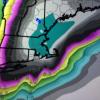-
Posts
74,818 -
Joined
-
Last visited
Content Type
Profiles
Blogs
Forums
American Weather
Media Demo
Store
Gallery
Everything posted by 40/70 Benchmark
-

El Nino 2023-2024
40/70 Benchmark replied to George001's topic in Weather Forecasting and Discussion
You're never going to get a season entirely absent of se ridges....I feel like some of us are guilty of overanalyzing a surfeit of data. -

El Nino 2023-2024
40/70 Benchmark replied to George001's topic in Weather Forecasting and Discussion
Go here: https://psl.noaa.gov/data/getpage/ Select: Daily Maps and Composites: NCEP/NCAR Reanalysis and related datasets Choose 11/1/23 to 11/17/23 to get this: https://psl.noaa.gov/cgi-bin/data/composites/comp.day.pl?var=Precipitation+Rate&level=Surface&iy[1]=&im[1]=&id[1]=&iy[2]=&im[2]=&id[2]=&iy[3]=&im[3]=&id[3]=&iy[4]=&im[4]=&id[4]=&iy[5]=&im[5]=&id[5]=&iy[6]=&im[6]=&id[6]=&iy[7]=&im[7]=&id[7]=&iy[8]=&im[8]=&id[8]=&iy[9]=&im[9]=&id[9]=&iy[10]=&im[10]=&id[10]=&iy[11]=&im[11]=&id[11]=&iy[12]=&im[12]=&id[12]=&iy[13]=&im[13]=&id[13]=&iy[14]=&im[14]=&id[14]=&iy[15]=&im[15]=&id[15]=&iy[16]=&im[16]=&id[16]=&iy[17]=&im[17]=&id[17]=&iy[18]=&im[18]=&id[18]=&iy[19]=&im[19]=&id[19]=&iy[20]=&im[20]=&id[20]=&monr1=11&dayr1=1&monr2=11&dayr2=17&iyr[1]=2023&filenamein=&plotlabel=&lag=0&labelc=Color&labels=Shaded&type=2&scale=&label=0&skip_vector=&cint=&lowr=&highr=&istate=0&proj=USA&xlat1=&xlat2=&xlon1=&xlon2=&custproj=Cylindrical+Equidistant&level1=1000mb&level2=10mb&Submit=Create+Plot -

El Nino 2023-2024
40/70 Benchmark replied to George001's topic in Weather Forecasting and Discussion
One group tormenting us with talk of how el Nino is going to continue to grow and swallow winter whole, and the other warning how the lingering la Nina base state will cancel winter. Hopefully a compromise plays nicely lol This place is a trip. -

El Nino 2023-2024
40/70 Benchmark replied to George001's topic in Weather Forecasting and Discussion
-

Winter '23-'24 Will Be A Lesson In Relativity
40/70 Benchmark replied to 40/70 Benchmark's topic in New England
Yea, this is the draw back to launching into an endeavor of this magnitude.....its very informative, but it consumes pretty much a week of my life and its difficult for anyone to actually sit down and read. I may go back an update it to include 1979-80 in the weak composite......haven't decided yet. -
Well, you are a bigger man than I am.
-
Well, even more irrelevant...like a dusting.
-
Not many care about an inch or two of slush on the hill tops of Beaver Brook in N ORH county...except for those that live there and it's simply not many, so few care. I'm sure they will reference it as it gets closer.
-
Almost that time of year....I'll DM you this week.
-
You haven't seen anything...start tying worse winters to CC...he will bite lol
-
You're, of course, correct, but I can't help myself.
-
I don't see anyone from the SNE crew that should be suspended...even snowman in the main thread I think does a good job of pulling in info. I have no issue with it....we are all human and have a vested interest one way or another.
-
I had enough tits last March.
-
All I'm saying is se Canada has been colder than recent years....I don't know about the other stuff.
-
That's what I was saying to Will...different vibe in the source region so far.
-
Need to start somewhere...I'd rather that than December 2015, but it's nothing that makes me interested. An inch of slush in Hubbardston....Booiinngggggg Some folks look at my outlook track record and say I have a cold and snow bias, but its nothing conscious... just worked out that way. I think you guys agree I am pretty objective in season don't use weenie goggles.
-
I'll take the under on 10:1 anywhere in Mass.
-
Zzzzzzzzzzz
-
LOL He cracked now that he realized his Soueaster is gone.
-

El Nino 2023-2024
40/70 Benchmark replied to George001's topic in Weather Forecasting and Discussion
No surprise..I've maintained all along that I will need some 2.0+ dailies to hit my 1.7-1.9 forecast ONI range. -

El Nino 2023-2024
40/70 Benchmark replied to George001's topic in Weather Forecasting and Discussion
Sign me up for 1940 1947, 1956, 1960, 1983, 2004, 2007 or even 2016. ...no skin off of by b***s if that composite works out. Only three seasons in that raindance list that I would pass on. -
64.2 IMBY
-
It was something on Facebook from Masslive speculating that maybe CC had reached a tipping point.
-
I saw that stupid article...media is nauseating.
-
He gets fixated on these wind fantasies and won't let go.






